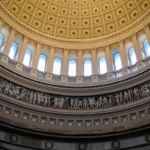Case Law and Alternative Dispute Resolution: Integrating Approaches

One significant legal trend in recent years is the integration of case law principles with alternative dispute resolution (ADR) mechanisms. ADR methods, such as mediation and arbitration, offer cost-effective and timely resolutions. However, the success of ADR often depends on the extent to which practitioners align their strategies with prevailing case law. This post explores the interplay between case law and ADR, offering insights on how attorneys can navigate both effectively to achieve favorable outcomes for their clients.
The Rise of ADR in Modern Legal Practice
ADR has gained significant traction as courts face rising caseloads and parties seek to avoid the costs and uncertainties of litigation. Mediation, arbitration, and hybrid models like med-arb now complement traditional litigation across many practice areas, from family law to corporate disputes. Courts have also embraced ADR by mandating pre-trial mediation or creating court-annexed arbitration programs.
Key benefits of ADR include:
- Efficiency: ADR typically resolves disputes faster than traditional litigation.
- Cost Savings: The streamlined process reduces litigation expenses for parties.
- Confidentiality: ADR proceedings are private, protecting sensitive information.
- Flexibility: Parties can tailor ADR processes to their specific needs.
Despite its advantages, ADR’s success hinges on understanding the legal context within which disputes arise. Case law informs how ADR agreements are interpreted, the enforceability of awards, and the boundaries of mediators’ and arbitrators’ authority.
Case Law as a Framework for ADR
Enforceability of ADR Agreements
Case law has provided critical guidance on the enforceability of ADR clauses in contracts. Courts generally favor ADR provisions but scrutinize their validity under principles of contract law. In AT&T Mobility LLC v. Concepcion (2011), the U.S. Supreme Court upheld the enforceability of arbitration agreements under the Federal Arbitration Act (FAA), emphasizing the strong federal policy favoring arbitration. However, the Court also acknowledged limitations, such as unconscionability, which could render ADR clauses unenforceable.
Judicial Review of Arbitration Awards
While courts typically defer to arbitration awards, they do retain limited oversight. In Hall Street Associates, LLC v. Mattel, Inc. (2008), the Supreme Court held that parties cannot contractually expand the grounds for judicial review of arbitration awards beyond those enumerated in the FAA. This decision underscores the importance of drafting arbitration clauses that account for the limited avenues for appeal.
Mediator Privilege and Confidentiality
Confidentiality is central to mediation, but case law delineates its boundaries. For example, in Rojas v. Superior Court (2004), the California Supreme Court held that mediation communications are broadly protected from discovery, reinforcing the need for open dialogue in ADR. However, exceptions exist, particularly when public policy concerns arise, such as allegations of fraud or criminal conduct.

Integrating Case Law into ADR Strategy
Drafting Robust ADR Clauses
A well-drafted ADR clause is the foundation of effective dispute resolution. Attorneys should:
- Ensure clarity in scope, process, and procedural rules.
- Specify the governing law to avoid conflicts.
- Include provisions addressing confidentiality, arbitrator selection, and award enforceability.
Drawing from case law, attorneys can anticipate challenges to ADR clauses and mitigate risks. For instance, following Concepcion, incorporating specific language to address unconscionability concerns can strengthen an ADR clause’s enforceability.
Selecting the Right ADR Mechanism
Case law often highlights the suitability of certain ADR methods for specific disputes. For example, arbitration may be preferable in complex commercial cases where parties seek a binding resolution, while mediation may be ideal for preserving relationships in family or employment disputes. Understanding judicial attitudes toward ADR in the relevant jurisdiction can guide this decision.
Advocating Effectively in ADR
Case law influences how parties present their cases in ADR proceedings. For instance:
- In arbitration, legal precedent guides arbitrators’ interpretations of contractual provisions or statutory requirements.
- In mediation, attorneys can use case law to provide context for settlement negotiations, helping parties evaluate the risks and benefits of potential outcomes.
The Role of Courts in Supporting ADR
Court-Mandated Mediation
Many jurisdictions require parties to engage in mediation before proceeding to trial. Courts rely on case law to define the parameters of such programs. In Local Rule 16.1 of the Southern District of Florida, for example, courts mandate early mediation in civil cases, emphasizing the role of ADR in reducing judicial backlog.
Vacating Arbitration Awards
While arbitration awards are final in most cases, courts intervene under limited circumstances, as defined by case law. Grounds for vacating awards include arbitrator bias, misconduct, or exceeding their authority. In Oxford Health Plans LLC v. Sutter (2013), the Supreme Court upheld an arbitrator’s interpretation of an ambiguous clause, reaffirming the high threshold for judicial interference.

Challenges and Ethical Considerations in ADR
Balancing Advocacy and Neutrality
Attorneys must balance zealous advocacy with respect for the ADR process. Ethical considerations include maintaining confidentiality, ensuring fair representation, and avoiding undue influence over mediators or arbitrators.
Navigating Power Imbalances
In ADR, power imbalances between parties can lead to unfair outcomes. Courts and practitioners have a duty to address these imbalances, as seen in cases where courts refused to enforce unconscionable ADR agreements.
Preserving Access to Justice
Critics argue that ADR can limit access to justice, particularly when arbitration clauses preclude class actions. In Epic Systems Corp. v. Lewis (2018), the Supreme Court upheld class action waivers in arbitration agreements, raising concerns about the rights of individuals to pursue collective claims.

Stay up to date on ADR with Continuing Education of the Bar (CEB)
CEB provides a range of online services designed to enhance legal practice, including Practitioner, CEB’s all-in-one legal research solution with authoritative practice guides. Practitioner is meticulously crafted by California lawyers for California lawyers, providing comprehensive insights and resources tailored to your specific needs. All practice guides seamlessly integrate with CEB’s primary law research tool, empowering you to delve into California, Ninth Circuit Court of Appeals, and U.S. Supreme Court case law, alongside California statutes and the California Constitution. As part of the Practitioner subscription, you gain access to DailyNews, ensuring you stay updated on any critical new cases or developments in your field. And don’t forget, Practitioner also includes TrueCite®, CEB’s powerful case law citator, enhancing your research efficiency and accuracy.
Our tools offer unparalleled support in case law research, legal analysis, and staying updated with the latest judicial decisions. By choosing CEB, you gain access to a wealth of knowledge, enabling you to navigate complex legal landscapes with confidence and precision.
Read more related content
- California’s Proposed Antitrust Crackdown: SB 763 Penalties Could Jump from $1 Million to $100 MillionCalifornia’s Proposed Antitrust Crackdown: SB 763 Penalties Could Jump from $1 Million to $100 Million A $1 million penalty for California corporations found guilty of criminal antitrust charges could soon … Continued
- California Wildfire Legal Response: Executive Orders, CEQA Exemptions, and Rebuilding GuidelinesCalifornia Wildfire Legal Response: Executive Orders, CEQA Exemptions, and Rebuilding Guidelines The Los Angeles and Ventura County wildfires are, first and foremost, a human tragedy, displacing families, devastating communities and … Continued
- Navigating the Litigation Process in California: A Practitioner’s Handbook Litigation in California can be a complex and time-intensive process, requiring legal practitioners to have a thorough understanding of procedural rules, case law, and effective legal strategies. Whether representing plaintiffs … Continued



